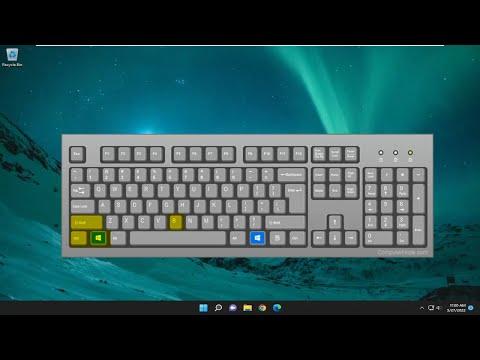I was working late one evening on a project that required the utmost attention to detail. As I was adjusting some images and manipulating 3D models, my computer screen suddenly went black, leaving me staring at a baffling and frustrating void. My heart sank as I realized that my graphics driver had likely crashed. I tried to shake off the panic and rebooted my computer, but the issue persisted. My frustration grew as my usual troubleshooting techniques yielded no results.
After a bit of research, I learned that restarting the graphics driver could potentially resolve this issue. The prospect of fixing the problem myself was both daunting and empowering. I decided to delve into this process and learn the ultimate steps to restart my graphics driver on Windows 11. The journey to understanding this task was a bit of a learning curve, but I’m glad I took it upon myself to figure it out.
Firstly, I needed to understand that a graphics driver is essential for the communication between my operating system and the graphics hardware. When this driver malfunctions, it can lead to various issues like screen flickering, black screens, or graphical glitches. Knowing this made me more determined to resolve the issue efficiently.
The first step I took was to utilize a built-in Windows feature called “Device Manager.” To access Device Manager, I pressed the “Windows key + X” on my keyboard, which brought up a menu with various options. I selected “Device Manager” from this list. Once in Device Manager, I expanded the “Display adapters” section, where I could see the graphics card listed. I right-clicked on this entry and chose the option “Disable device” from the context menu. This action effectively turned off the graphics driver.
With the driver disabled, I waited a few moments and then right-clicked again on the same entry, selecting “Enable device” to turn it back on. This simple restart of the graphics driver often resolves minor issues and refreshes the driver’s connection with the hardware.
However, if this method didn’t work, I had another technique up my sleeve. I could use a keyboard shortcut to restart the graphics driver. This method was not only quick but also quite effective in many cases. I pressed “Ctrl + Shift + Windows key + B” simultaneously. Almost immediately, I heard a brief beep sound, and the screen flickered briefly. This combination restarts the graphics driver and can resolve issues related to the display without having to reboot the entire system.
If neither of these methods resolved the problem, I had to consider updating or reinstalling the graphics driver. I returned to the Device Manager and right-clicked on the graphics card entry again. This time, I selected “Update driver.” I chose the option to search automatically for updated driver software, which allowed Windows to find and install any available updates for my graphics card. Keeping the driver updated is crucial for ensuring optimal performance and compatibility with new applications.
In some instances, updating the driver did not solve the problem. I then had to resort to reinstalling the driver. In Device Manager, I right-clicked on the graphics card entry and selected “Uninstall device.” I made sure to check the box to delete the driver software for this device, which ensured a clean installation. After uninstalling, I restarted my computer, and Windows automatically attempted to reinstall the driver upon reboot. If Windows did not automatically reinstall the driver, I visited the graphics card manufacturer’s website to download and install the latest driver version manually.
Through this process, I learned that restarting or updating the graphics driver can solve many common display-related issues. It was an empowering experience to tackle and resolve a problem that initially seemed daunting. This newfound knowledge not only helped me fix my immediate issue but also equipped me with the skills to handle similar problems in the future.
By applying these methods—disabling and enabling the driver, using keyboard shortcuts, and updating or reinstalling the driver—I was able to address and resolve the problem effectively. Each step I took provided a deeper understanding of how the graphics driver functions and how critical it is for smooth computer operation. My ultimate takeaway was the importance of being proactive and informed about troubleshooting techniques, which made me feel more confident in managing my system’s performance.
